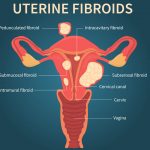
How to treat varicocele without surgery?
If you are looking for options to manage varicocele, many treatment options are available, excluding surgery.
Varicocele is a condition where veins in the scrotum become abnormally enlarged. This condition is similar to varicose veins in your leg. The veins in the scrotum become twisted and swollen, just like varicose veins in the leg. It is believed that varicocele forms during puberty, and they grow larger and develop over time.
Like other body parts, the blood from the testicles flows out via veins (testicular veins). The blood flows from the heart to the testicles in one direction. The blood flow is unidirectional because of the veins’ valves that prevent the blood from moving backward. However, in varicocele veins, they fail to perform their normal function (cause may be unknown), which causes pooling of the blood in and around the testicles and causes varicocele veins.
Varicocele may affect 10-15 males out of 100, and it is more common on the left side of the scrotum. However, it can also occur on both sides simultaneously.
If you or your friend or a relative has varicocele veins and are looking for treatment options that do not involve surgery, please keep reading.
What are the treatment options for varicocele, and why varicocele embolization?
Varicocele is usually harmless and does not cause problems, and most patients do not need treatment. However, it may cause pain in the scrotum, low sperm production, and poor sperm quality. All this may cause infertility or abnormal development of testicles. For such cases, treatment may be indicated.
The various treatment options for varicocele are:
1. Surgery: There are three types of surgical treatment options available which are:
- Microsurgery
- Open surgery
- Laparoscopic surgery
2. Varicocele embolization or Catheter-directed embolization
Varicocele embolization is a non-surgical procedure that interventional radiologist does. It is highly effective and widely used to treat varicocele. The advantages of varicocele are as follows:
- Faster recovery time as compared to surgical procedures
- No need for General anesthesia
- No incisions
- No hospitalization required
- Lower risk and complications as compared to surgical procedures
- Less downtime for physical activity
- Cost-effective
- No sutures
- No infections
- As effective as surgical procedures
What is Varicocele embolization?
As mentioned above, it is a non-surgical procedure performed by an interventional radiologist. The procedure involves using catheters and other instruments to close off the blood flow of the nonfunctional vein. The procedure does not cause any pain, and the patient is relaxed. The interventional radiologist makes a tiny cut (incision) in the groin region using localized anesthesia. After which, a thin catheter is threaded into the vein (femoral vein) directly to the testicular vein. Later, a contrast dye is injected to help identify where the varicocele is and perform the varicocele embolization or blocking of the vein. Using coils or sclerosants, the physician blocks the abnormal veins, thus decreasing the pressure on the varicocele. Varicocele embolization causes blood flow to redirect to other pathways and stops the blood flow internally without undergoing a surgical procedure which does the same.
What to expect before and after the varicocele embolization procedure?
Before the procedure, your urologist or interventional radiologist (IR) will take your medical history and ask you to for an ultrasound of the scrotal region.
A brief physical examination is conducted to determine if the procedure can be conducted on you or not. An interventional radiologist will explain the procedure that needs to be followed before the procedure. The following instructions need to be followed:
- Any allergies or known interactions with contrast dye should be disclosed to your physician
- You will be advised not to eat or drink 8-12 hours before the procedure
- If you are a smoker, you should stop smoking
- You may be placed on antibiotics treatment to avoid the risk of infection
- Pre-anesthetic checkup for determination of fitness for anesthesia
- Additional instructions provided by the doctor or healthcare team needs to be followed
Once the procedure is completed, you will be kept under observation for an hour or two. The healthcare team will provide a set of instructions that need to be followed (for instance, what to eat, when to eat, what to drink, and when to drink).
In the majority of the cases, you will be advised to go home. However, you should take it easy and rest for a day. You can resume daily activities within 24 hours (driving). However, activities that involve physical exertion should be avoided for a few days. Sexual activity should also be avoided for some weeks.
You should inform your doctor immediately if you experience any complications and visit for timely follow-up.




